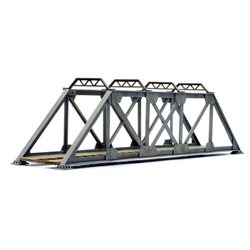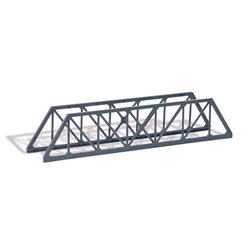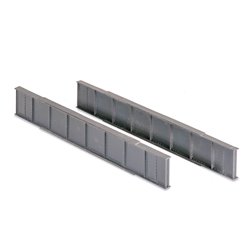Static grass puffer bottles work by manually charging model grass fibres with static electricity. When the charged...
No products
Product successfully added to your shopping cart
There are 0 items in your cart. There is 1 item in your cart.
Search Tips
Should I use a girder bridge for a river crossing?
Girder bridges are good choices for river crossings for a number of reasons. Firstly, they offer great strength and are lighter than most stone or brick bridges. Upkeep and repair are reasonably straightforward on a girder bridge and being modular in construction, individual sections can be replaced with comparative ease if required.
A girder bridge is a type of bridge that consists of one or more horizontal beams, known as girders, supported by vertical columns or piers. These girders provide the main support for the bridge deck, which is the part that carries the weight of the trains or vehicles crossing the river.
There are a few reasons why a modeller might choose to use a girder bridge for a river crossing:
- Strength and stability: girder bridges are known for their strength and stability. They can withstand heavy loads and provide a secure crossing for trains or vehicles.
- Aesthetics: girder bridges can also add considerable visual interest to a layout. They come in various designs and can be painted or weathered to match the surroundings, creating a realistic structure in keeping with the layout.
- Versatility: girder bridges can be used for different types of rivers and landscapes. Whether the crossing is wide or narrow, a girder bridge can be adapted to fit the space and provide a suitable crossing.
However, it's important to consider a few factors before deciding on a girder bridge:
- Scale compatibility: make sure the scale of the girder bridge matches the scale of the layout in question. Girder bridge kits are available in different scales, such as OO/HO and N gauges, so choose the one that best suits a particular layout.
- Realism: consider the era and location of the layout. It is a good idea to research the types of bridge that were commonly used in that time and place to ensure the girder bridge fits the overall theme and adds to the realism of the layout.
- Space and budget: girder bridge kits can vary in size and cost. Consider the space available for the river crossing and any budget constraints when selecting a girder bridge. Also, with the appropriate materials, a girder bridge can be an interesting and fun scratch-build project and as such can be individually tailored to the landscape in question. This can also be a useful and practical economy option for modellers with budget constraints.
In conclusion, using a girder bridge for a river crossing can be a great choice for a layout. They offer strength, stability, versatility and aesthetic appeal. The aforementioned notwithstanding, it is still important to consider any scale, compatibility, realism, space or budgetary considerations before making any final decision.
Click here to receive the tips weekly in your mailbox. You can unsubscribe at any time.










